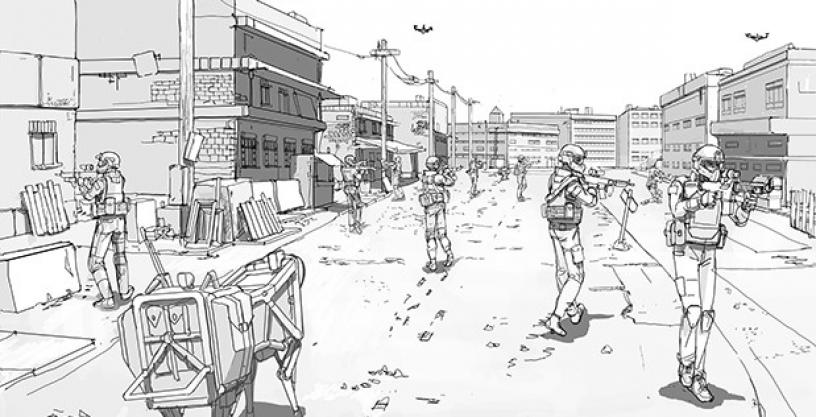Summary

Modern military engagements increasingly take place in complex and uncertain battlefield conditions where attacks can come from multiple directions at once, and in the electromagnetic spectrum and cyber domains, as well.
U.S. Army and U.S. Marine Corps dismounted infantry squads have been unable to take full advantage of some highly effective multi-domain defensive and offensive capabilities that vehicle-assigned forces currently enjoy - in large part because many of the relevant technologies are too heavy and cumbersome for individual warfighters to carry or too difficult to use under demanding field conditions.
DARPA's Squad X seeks to help overcome these challenges and help ensure U.S. small unit dominance over adversaries in the decades to come. The goal of the Squad X Experimentation program is to design, develop, and validate autonomous system prototypes, equipped with novel sensing tools and off-the-shelf technologies, some of which were identified via the previous Squad X Core Technologies program. The technologies aim to increase squads' situational awareness, while the autonomous systems allow squads to increase their battle space and area of influence.
Squad X focuses its technology development in four key areas:
- Precision Engagement: Precisely engage threats while maintaining compatibility with infantry weapon systems and without imposing weight or operational burdens that would negatively affect mission effectiveness. Capabilities of interest include distributed, non-line-of-sight targeting and guided munitions.
- Non-Kinetic Engagement: Disrupt enemy command and control, communications and use of unmanned assets at a squad-relevant operational pace (walking with occasional bursts of speed). Capabilities of interest include disaggregated electronic surveillance and coordinated effects from distributed platforms.
- Squad Sensing: Detect potential threats at a squad-relevant operational pace. Capabilities of interest include multi-source data fusion and autonomous threat detection.
- Squad Autonomy: Increase squad members’ real-time knowledge of their own and teammates’ locations in GPS-denied environments through collaboration with embedded unmanned air and ground systems. Capabilities of interest include robust collaboration between humans and unmanned systems.
The resulting integrated systems would improve situational understanding of the multi-domain environment; optimize squad maneuverability via physical, cognitive and material resources; and shape and dominate the battlespace via synchronization of fire and maneuvering in all three domains: physical, electromagnetic, and cyber.
Office
Tactical Technology OfficeThis program is now complete.
This content is available for reference purposes. This page is no longer maintained.
